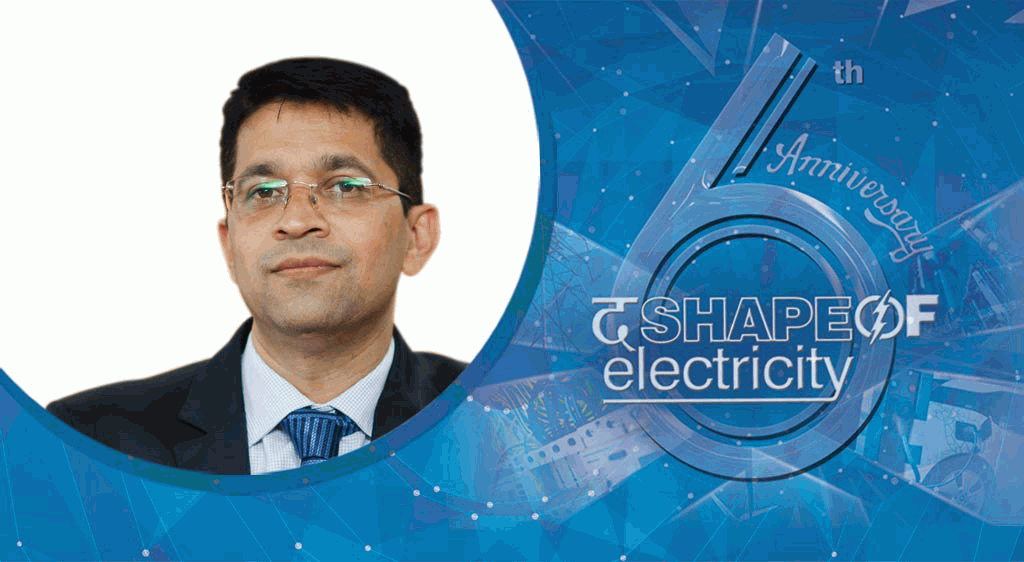Solar power vital to achieve COP21 goals
By EPR Magazine Editorial November 14, 2018 2:12 pm IST
By EPR Magazine Editorial November 14, 2018 2:12 pm IST

Amit Barve, Vice President – Business Development and Marketing, Enerparc Energy Pvt Ltd
“As a part of COP21 many of the developing as well as developed countries has taken self-goals to cut on carbon emission and promote renewable energy for curbing global warming”
According to Amit Barve, Vice President – Business Development and Marketing, Enerparc Energy Pvt Ltd, the fulcrum for any nation’s growth would be to create opportunity for people to make their livelihood, which can be achieved only through use of energy. Here, he walks us through various plans and initiatives that has been implemented to improve the renewable energy sector
Transformation in power sector
As India is on trajectory of growth, moving from developing country to developed country, power sector would remain on transformational mode continuously and we would see every sector becoming more dynamic in next two to three decades. We have seen many major changes happening in power sector, especially the ones which are significant are as follows:
• Rapid increase in rate of addition of generation capacity year on year
• Renewables getting more preference in the entire generation mix as compared to conventional sources of generation
• Opening up of transmission and distribution for private companies allowing them to compete with government owned companies pushing scale and efficiencies
• Rapid expansion and revamp in transmission and distribution network
• Many private companies taking over distribution in metro cities and competing with other distribution companies on cost as well as efficiency.
This dynamism in sector is here to stay. We would even see more changes in the sector, as growth of renewables continues in the energy mix in India.
Power for all
UDAY – a successful initiativeEfforts to cut carbon emission
As we witness many detrimental and long lasting effects of global warming, renewable energy is the only future for energy sector. This fact is now getting acknowledged and accepted worldwide, and as a part of COP21 many of the developing as well as developed countries has taken self-goals to cut on carbon emission and promote renewable energy for curbing global warming. As a part of COP21, India has also taken a leadership position by declaring 175GW of renewable energy that it would install by 2022, out of which 100 GW contribution would come through solar energy.
By now our company has added 2,000MWp of solar power on grid, out of which we have invested in 1,200MWp as developer and selling energy to various grid operators. We are also managing close to 1,600MWp solar assets for their regular operation and maintenance. In India, we are focused on delivering solar energy solutions to industrial and commercial customers and we are helping them to optimise their energy cost.
Potential in solar powered irrigation
This is wonderful idea for effectively utilising advantage of solar energy that is distributed, decentralised generation of power. As sunlight is omnipresent, it makes sense to generate and use the energy at the point of utilisation rather than generating at one single location and wheeling it over hundreds of kilometres effectively adding to losses in transmission and distribution. The concept started with segregating agricultural feeders and making energy available for the sector for irrigating lands. However timings of availability of power were a concern as most of the times power would be available only in night time and farmers had to go to fields at night to irrigate their fields. Now, with these feeders getting powered purely by solar power they would be able to use produced energy during sunny hours and irrigate their land. Effectively, it would help farmers with virtually cheap power, power available in day time, and help DISCOM’s in reducing their cross subsidy burden and able to service agriculture effectively making it a win-win situation.
Ambitious plans
Today, India has installed generation capacity of 345GW and renewable taking a lion’s share of 33 per cent. Electricity consumption (demand) is expected to grow at CAGR of 7.1 per cent from FY17 – 22 while six per cent per annum for next five years. It means we need to keep adding generation capacity year on year and increase share of renewables to make generation sustainable and clean. Also, addition of renewables in large quantum and arrival of block chain technologies are going to change the way electricity is produced and consumed putting severe pressure on existing business models of distribution companies .To match this dynamism in sector various policies have undergone changes and more is expected in coming years. Seamless change in policies should take into consideration new realities to make changes and swift adoption is key to achieving these ambitions.
We use cookies to personalize your experience. By continuing to visit this website you agree to our Terms & Conditions, Privacy Policy and Cookie Policy.